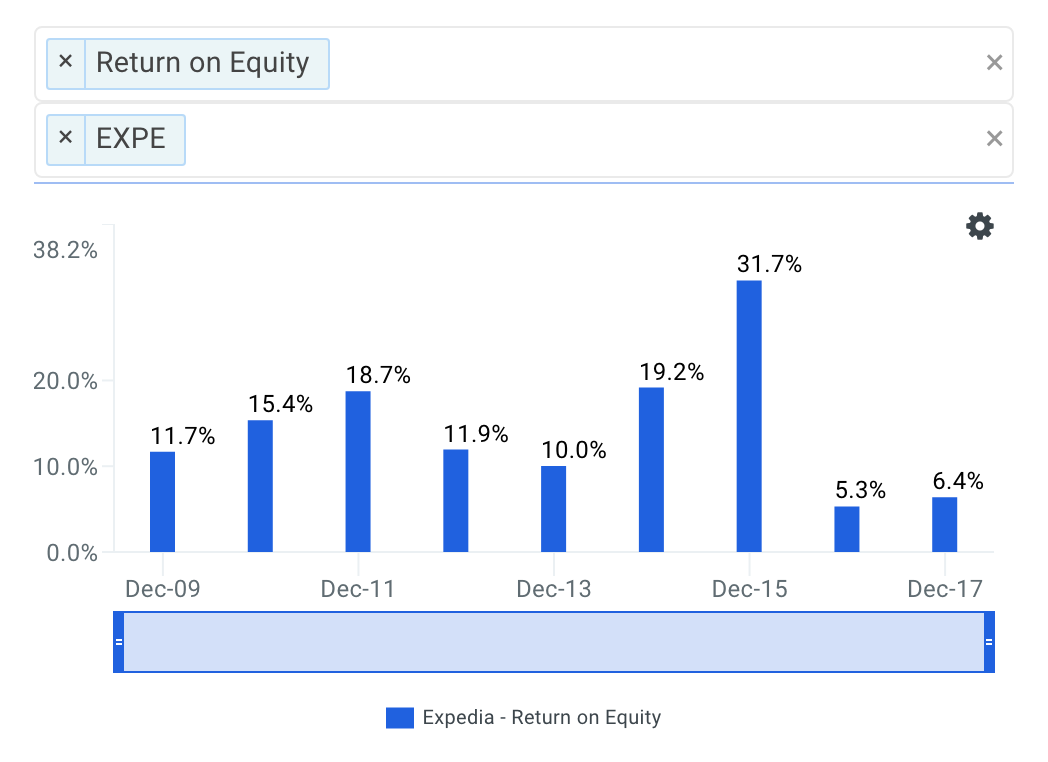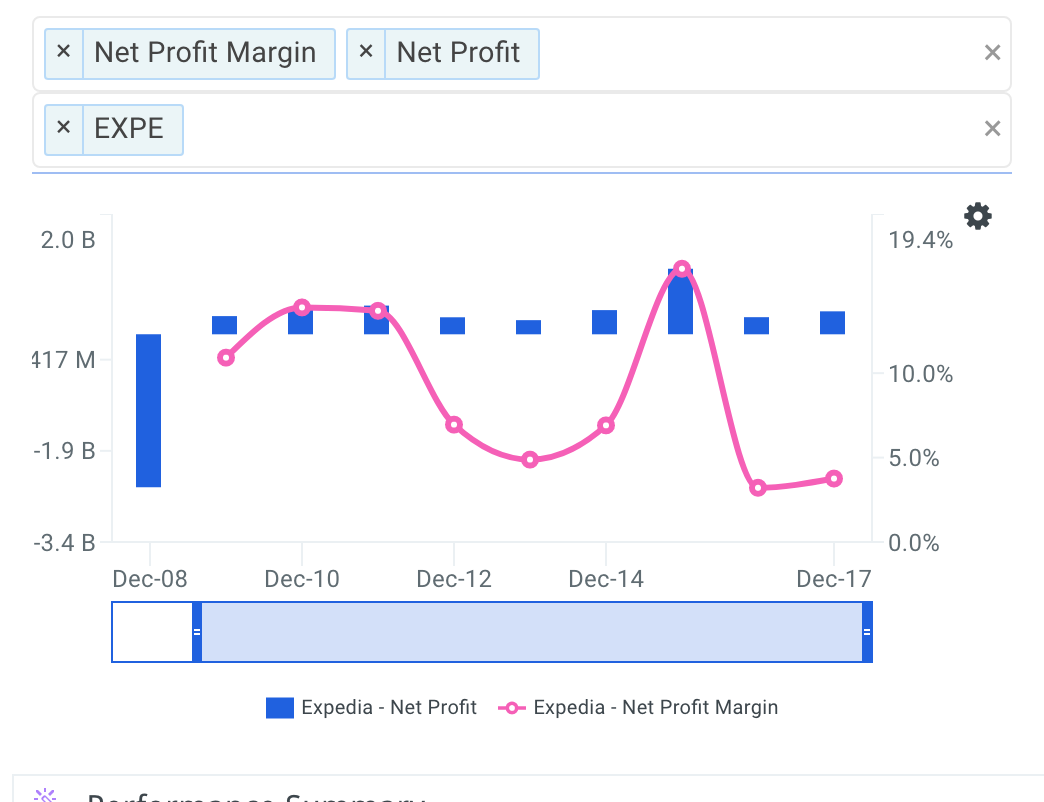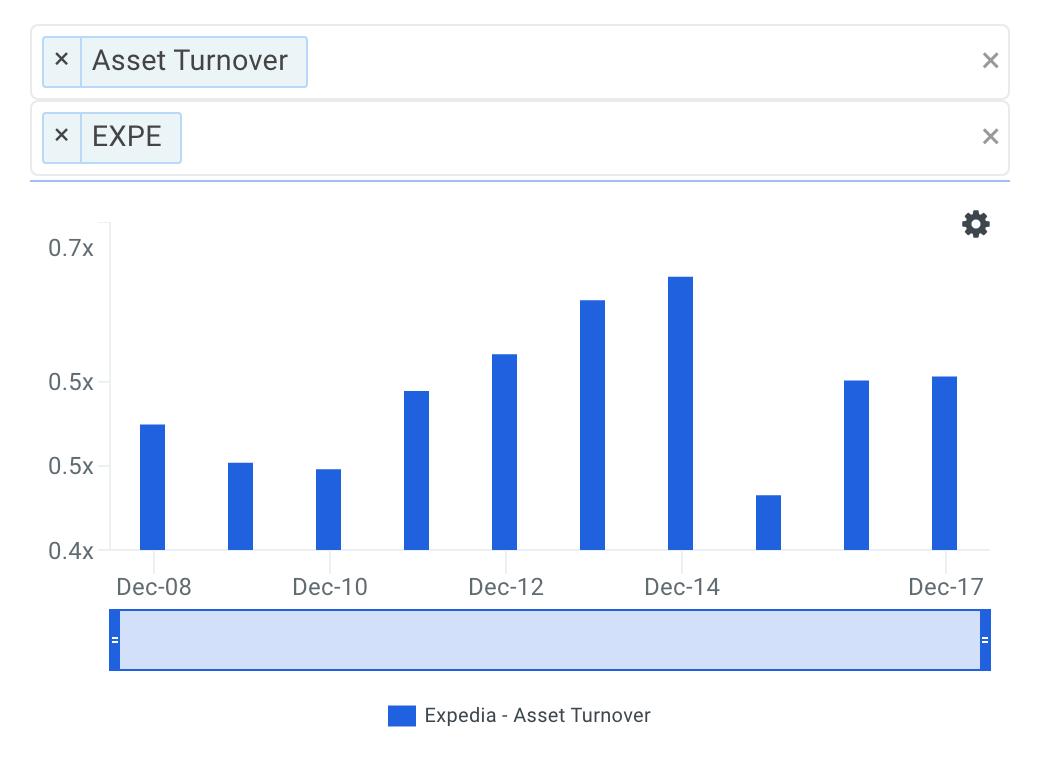Expedia Inc (NASDAQ: EXPE) delivered a below average 6.4% ROE over the past year, compared to the 8.8% return generated by the Consumer Discretionary sector. Expedia's results may indicate management is running an inefficient business relative to its peers, which may very well be the case, but it is important to understand what ROE is made up of and how it should be interpreted. Knowing these components may change your view on Expedia's performance and future prospects. I show you exactly what I mean in my DuPont analysis below.
How To Calculate Expedia's ROE
Return on equity measures a corporation's profitability by revealing how much profit a company generates with the money shareholders have invested. Return on Equity or ROE is generally calculated using the following formula:
ROE = Net Income To Common / Average Total Common Equity
ROE is a helpful metric that illustrates how effective the company is at turning the cash put into the business into gains or returns for investors. However, it is important to note that ROE can be "manufactured" by management with the use of leverage or debt.
The return on equity achieved by Expedia over the last few years is shown below.

source: finbox.io data explorer - ROE
The return on equity of Expedia has generally been declining over the last few years. ROE decreased from 31.7% to 5.3% in fiscal year 2016, increased to 6.4% in 2017 and the LTM period is also its latest fiscal year. So what's causing the general decline?
Understanding Expedia's Declining Return On Equity
The DuPont analysis is another way to calculate a company's ROE using the following three metrics:
Return on Equity = Net Profit Margin * Asset Turnover * Equity Multiplier
Analyzing changes in these three items over time allows investors to figure out if operating efficiency, asset use efficiency or the use of leverage is what's causing changes in ROE. Strong companies should have ROE that is increasing because its net profit margin and/or asset turnover is increasing. On the other hand, a company may not be as strong as investors would otherwise think if ROE is increasing from the use of leverage or debt.
So what exactly is causing Expedia's declining returns?
Net Profit Margin Trends
The net profit margin of Expedia has generally been declining over the last few years. Margins decreased from 16.2% to 3.2% in fiscal year 2016 and slightly increased to 3.8% in 2017.

source: data explorer - net profit margin
Therefore, the company's decreasing margins help explain, at least partially, why ROE is also decreasing. Now let's take a look at Expedia's efficiency performance.
Asset Turnover Trends
A promising sign for shareholders, Expedia's asset turnover has increased each year since 2015 after dropping considerably. Turnover increased from 0.54x to 0.56x in fiscal year 2016 and increased to 0.59x in 2017. However, it is still well below what it achieved from 2012-2014.

source: data explorer - asset turnover
Finally, the DuPont constituents that make up Expedia's ROE are shown in the table below. Note that the table also compares Expedia to a peer group that includes [Ctrip.com International, Ltd.](Consumer DiscretionaryCTRP) (NASDAQ: CTRP), [Liberty Expedia Holdings, Inc.](Consumer DiscretionaryLEXEA) (NASDAQ: LEXEA), [Liberty Expedia Holdings, Inc.](Consumer DiscretionaryLEXEB) (NASDAQ: LEXEB) and [Liberty TripAdvisor Holdings, Inc.](Consumer DiscretionaryLTRPA) (NASDAQ: LTRPA).

source: finbox.io's DuPont model
In conclusion, the DuPont analysis has helped us better understand that Expedia's general decline in return on equity is the result of a worsening net profit margin, a low asset turnover ratio and declining leverage. Therefore when looking at the core operations of the business, Expedia shareholders don't necessarily need to panic just yet due to the company's general decline in profitability along with a steady improvement in operational efficiency.
The DuPont approach is a helpful tool when analyzing how well management is utilizing shareholder capital. But before making an investment decision, I recommend you continue to research Expedia to get a more comprehensive view of the company by looking at:
Valuation Metrics: what is Expedia's price to book ratio and how does it compare to its peers? Analyze Price / Book here.
Risk Metrics: what is Expedia's CapEx coverage? This is the amount a company outlays for capital assets for each dollar it generates from those investments. View the company's CapEx coverage here.
Efficiency Metrics: is management becoming more or less efficient in creating value for the firm? Find out by analyzing the company's return on invested capital ratio here.
Author: Andy Pai
Expertise: financial modeling, mergers & acquisitions
Andy is also a founder at finbox.io, where he's focused on building tools that make it faster and easier for investors to do investment research. Andy's background is in investment banking where he led the analysis on over 50 board advisory engagements involving mergers and acquisitions, fairness opinions and solvency opinions. Some of his board advisory highlights:
- Sears Holdings Corp.'s $620 mm spin-off via rights offering of Sears Outlet, Hometown Stores and Sears Hardware Stores.
- Cerberus Capital Management's $3.3 bn acquisition of SUPERVALU Inc.'s New Albertsons, Inc. assets.
Andy can be reached at [email protected].
As of this writing, I did not hold a position in any of the aforementioned securities and this is not a buy or sell recommendation on any security mentioned.


